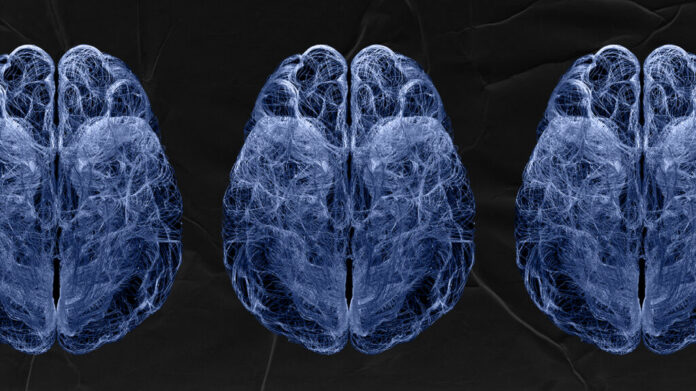
- Immune cells called microglia ingest infected and damaged cells in the brain.
- A new study suggests that microglia can also inhibit the buildup of a toxic protein in the brains of people with preclinical Alzheimer’s and slow their cognitive decline.
- Drugs that activate microglia may therefore help to slow the disease in its early stages.
- However, other research hints that microglia may become harmful in later stages of the disease.
Alzheimer’s disease is a progressive brain disorder that impairs a person’s memory and thinking skills. In its later stages, the condition severely affects their ability to carry out simple everyday tasks.
It is the most common form of dementia, affecting around one in 14 people over the age of 65 and one in six people over the age of 80.
In the United States, more than 6 million people over 65 may have Alzheimer’s, according to the
Scientists have long debated whether the brain’s immune cells, known as microglia, have a protective or a detrimental role in the disease.
In the later stages of Alzheimer’s, they may contribute to harmful inflammation. But a new study, which appears in
“Researchers are still trying to understand what triggers the microglia to turn from being protective to becoming overactive and damaging,” said Dr. Rosa Sancho, head of research at Alzheimer’s Research UK, who was not involved in the recent study.
“We know from recent evidence that they are linked to Alzheimer’s, but we don’t yet fully understand how their role changes as the disease progresses,” she told Medical News Today.
Microglia ingest cells that are damaged or infected with pathogens. They also trigger inflammation, which can have either beneficial or harmful effects.
The cells are known to ingest beta-amyloid, one of the two types of insoluble, toxic proteins that build up in the brains of patients with Alzheimer’s.
Many of the genes that determine a person’s risk of developing the disease are involved in the function of microglia.
In particular, mutations in a gene called TREM2 – which makes an important receptor that microglia carry on their surface — increase the risk of Alzheimer’s.
TREM2 receptors activate microglia when they detect tissue damage in brain diseases such as Alzheimer’s and Parkinson’s.
Some
However, it has been less clear how activated microglia affect the levels of tau, which is the other insoluble, toxic protein implicated in Alzheimer’s.
Research suggests that tau is a better indicator than amyloid of how far the disease has progressed, so the most effective future treatments will probably reduce the buildup of tau.
Researchers at Lund University and the Karolinska Institute in Sweden decided to investigate the role of microglia in tau accumulation early in the disease.
They followed 64 people who had yet to develop any symptoms of Alzheimer’s but had evidence from brain scans of a buildup of both tau and beta-amyloid.
The researchers discovered that, several years later, the patients with higher levels of TREM2 at the start of the study had accumulated fewer tau fibrils in their brains and had experienced less severe cognitive decline.
This suggests that when the TREM2 receptor on microglia senses the presence of damaged brain cells early in the course of the disease, they can protect against the buildup of tau.
This adds to animal studies’ evidence that microglia can ingest tau fibrils.
“This in turn means that the development of the disease is slower and the deterioration of the patient’s cognitive abilities is slowed down,” says senior author Prof. Oskar Hansson, who is a professor of neurology at Lund University, and senior physician at Skåne University Hospital in Scania, Sweden.
Prof. Hansson believes the results are promising because several drug companies are developing antibodies that can activate TREM2 receptors.
He concludes:
“In addition to trying to find therapies to reduce the proteins beta-amyloid and tau, I see this as a third treatment principle. Perhaps in the future patients can receive a cocktail of drugs that, in addition to reducing beta-amyloid, also boost TREM2 antibodies and thus slow down the course of the disease.”
On the face of it, the new findings appear to contradict
MNT asked Dr. Tharick Ali Pascoal, first author of that study and assistant professor of psychology and neurology at the University of Pittsburgh, PA, about this apparent contradiction.
He said the leading theory is that inflammation as a result of microglia activation is protective in the early stage of Alzheimer’s, which was the focus of the new study, but harmful later.
“Thus, this is not against our work, but it is complementary since our work focused mostly on the later stages,” said Prof. Pascoal.
“It is possible that the initial inflammation is protective and for some reason, the inflammation becomes dysregulated,” he added.
Over time, the immune system may lose its ability to degrade tau fibrils, he said, which then start to spread through the brain.
“The over-activation of the brain’s immune system is emerging as a key target for developing Alzheimer’s treatments,” said Dr. Sancho.
“Research that helps us understand more about what these immune cells do and their role in diseases like Alzheimer’s will be crucial to find new life-changing treatments.”
The authors of the new study acknowledge that it had some limitations.
In particular, although there were 400 individuals in the study as a whole, only 64 had a buildup of both tau and beta-amyloid from the outset.
More significant numbers would provide more statistically reliable results.
In addition, they conducted brain scans and cognitive tests over a period of only four years. They will continue to monitor the same individuals to see how well microglia protect their brains in the longer term.
Hits: 0









